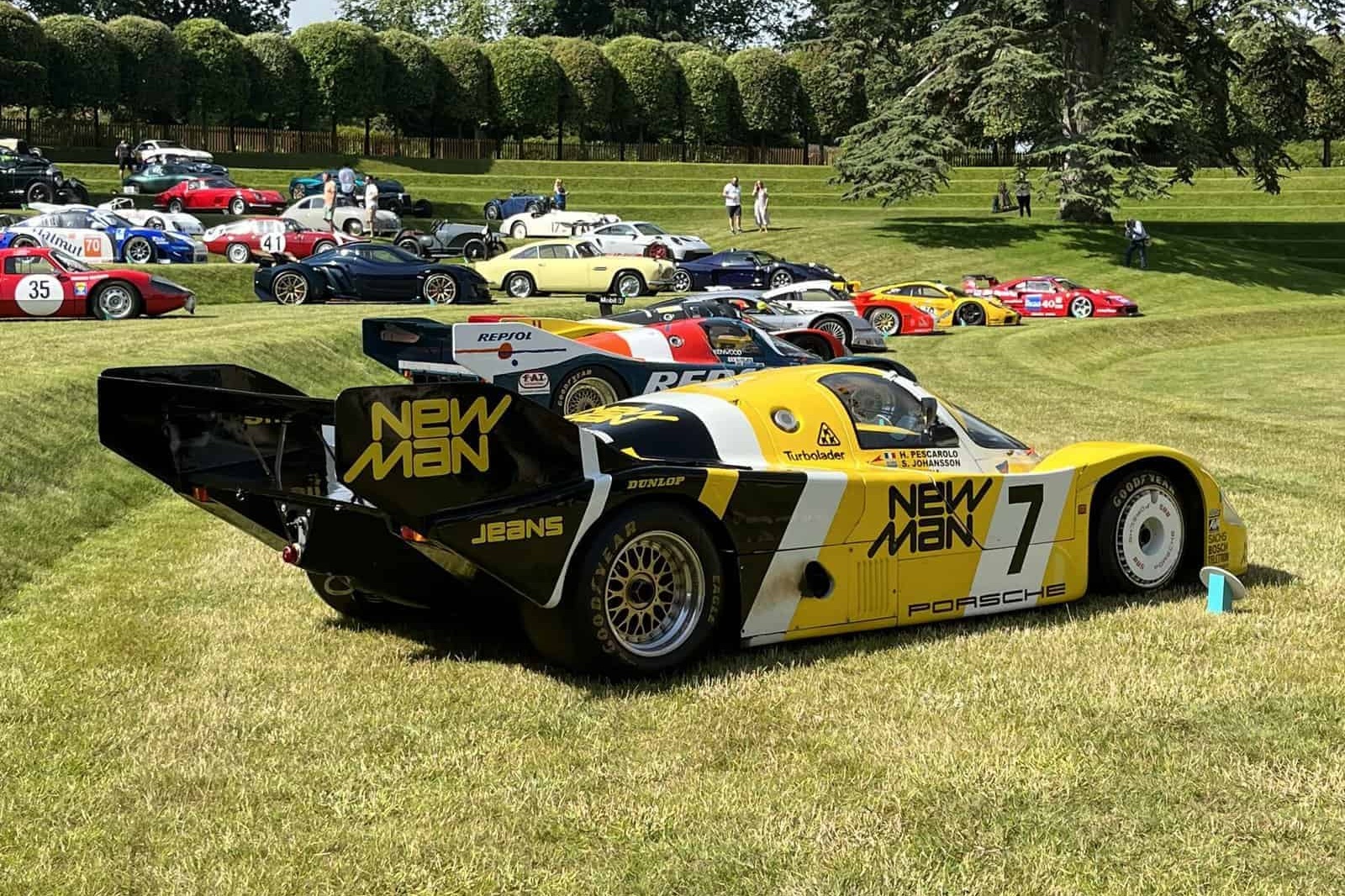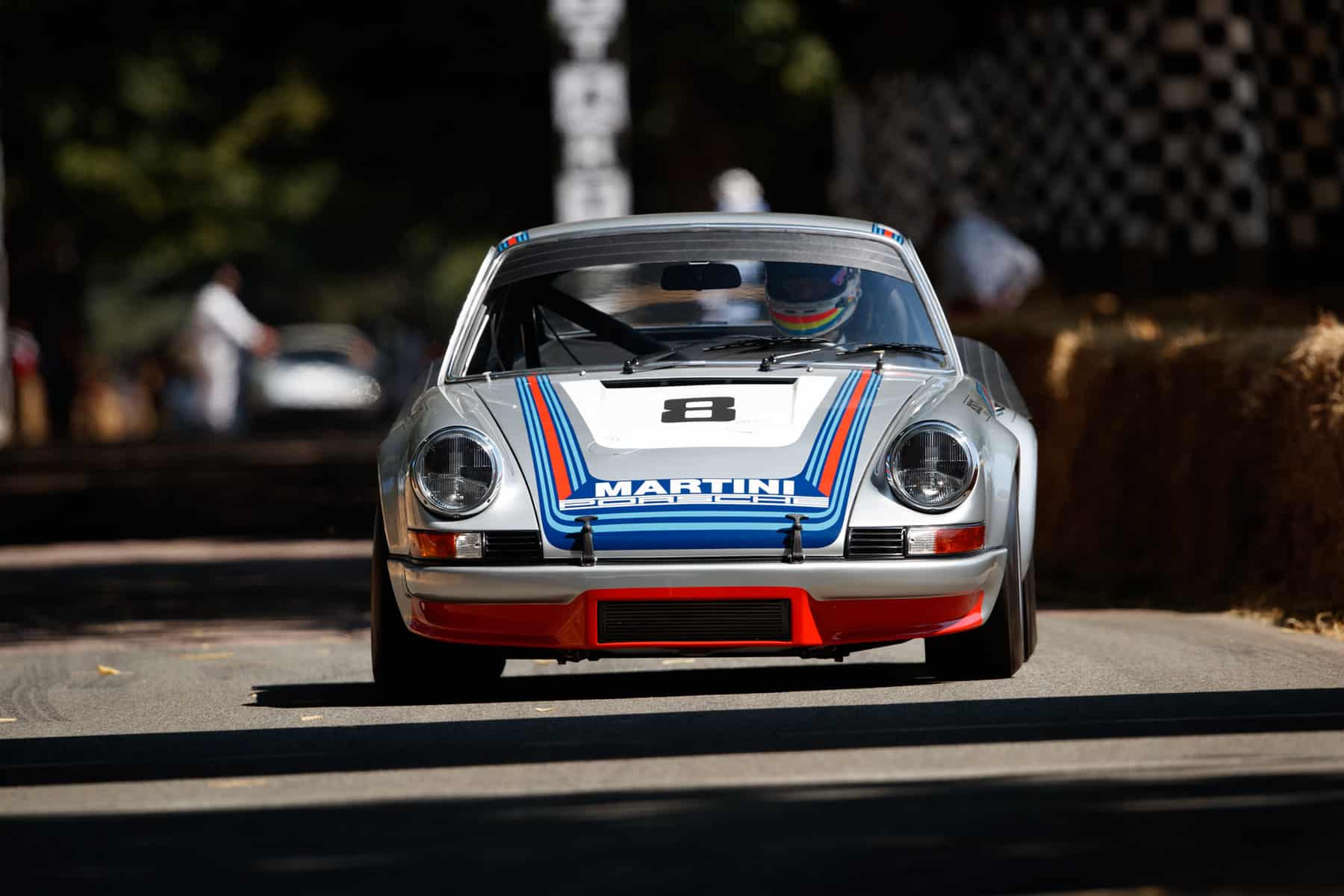Top Brass
The Mercer Raceabout – "more than the sum of its parts.”
BY: KEN GROSS
WITH DRIVING IMPRESSIONS BY MILES C. COLLIER
PHOTOS: PETER HARHOLDT
“The Kings of the Road,” Ken W. Purdy’s evocative book, jump-started many love affairs with old cars. Purdy raved about pre-World War II Alfa Romeos, Bugattis, ’Benzes, and Bentleys, and he especially favored an American sports car built in Trenton, Mercer County, New Jersey.
Writing in True magazine in 1948, Purdy opined, “the hardest-to-get American car today is no streamlined Detroit wonder wagon; it’s the Mercer Raceabout, made before World War I. Dumb luck may get you one of these New Jersey–built sports jobs, but mere money won’t.”
After he was offered an un-restored 1912 Raceabout, once owned by legendary racer Barney Oldfield, Purdy bought the car sight unseen, treated it to a then-astronomical $4,000 restoration by Mercer guru Conrad Lofink, and described it in words that still echo enticingly:
“Nothing the writer has ever sat in offered as much sheer enjoyment,” Purdy wrote. “The enormous attraction of the Mercer derives from its starkness. There are no useless gadgets. Everything on the car contributes something. Visibility? You can see the ground under the right front wheel! You can gauge a corner literally to one inch, and the merest twitch of the steering wheel will pull you around the car ahead of you.
“You have to pay for this quickness, of course,” cautioned Purdy. “It takes muscle to turn a wheel that only goes one and one-quarter turns from full right to full left.”
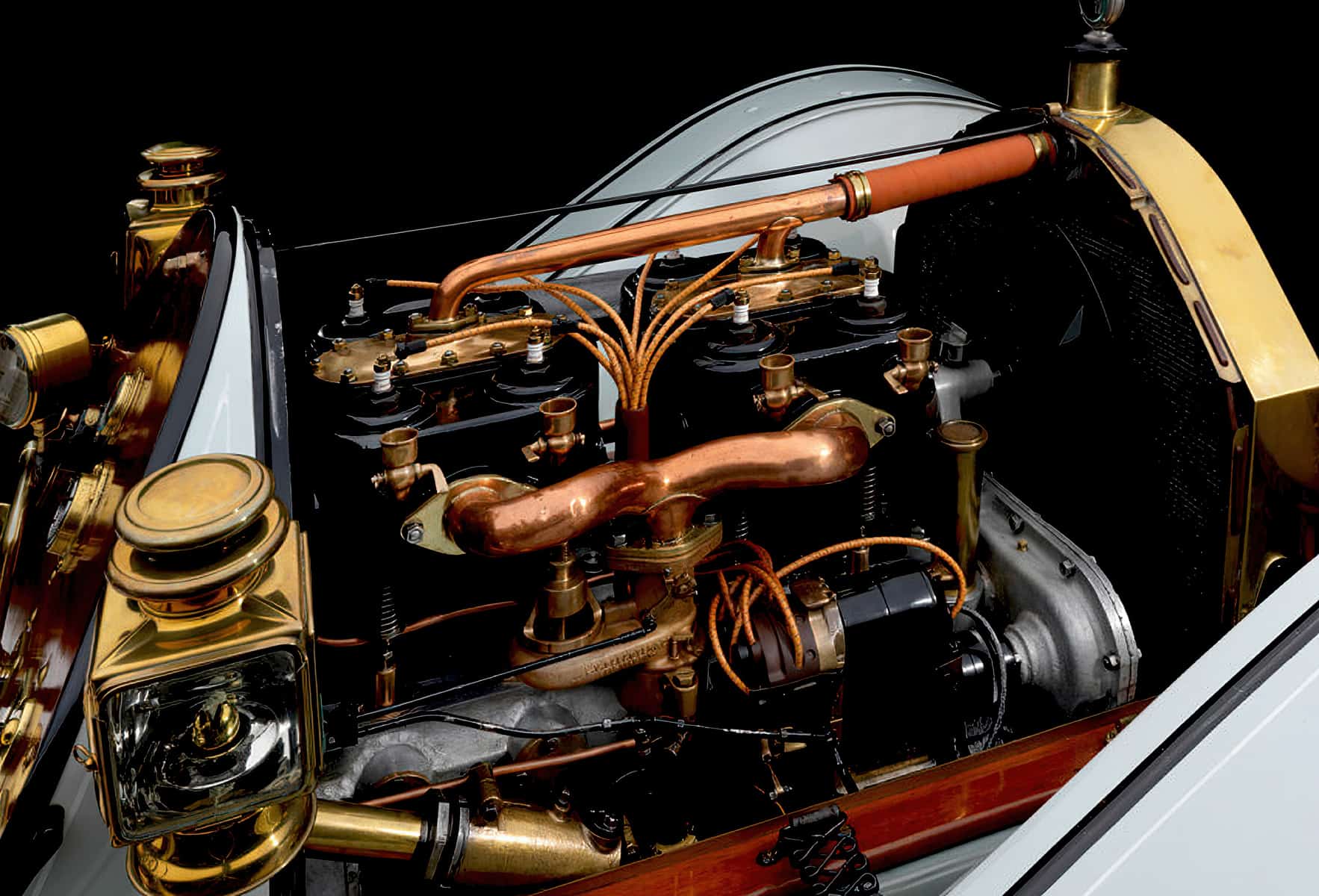
The best pre-World War I-era drivers – men like Barney Oldfield, Ralph DePalma, Eddie Pullen, and Spencer Wishart – all competed in Mercers. And talented amateurs could take this exceptional car right from the showroom to a track and do well, even against purpose-built race cars. Raceabouts swept five of six major contests in 1911. In Los Angeles in May 1912, Ralph DePalma set eight new class world records in a Mercer, driving 150 miles in 130 minutes on a road course, averaging nearly 70 mph. Spencer Wishart snatched a strictly stock Mercer out of an Ohio dealership that year and won a 200-mile dirt track event.
Say what you will about Stutz Bearcats, but the pre-WWI Mercer Raceabout was, and is, the quintessential American sports roadster. More than one hundred years on, a well set up Mercer is nimble, surprisingly quick, and, aside from its feeble, two-wheel mechanical brakes, has the agility and low-speed punch of a more modern machine. A skilled driver can toss a Raceabout into a four-wheel drift, steer with the throttle, and astonish anyone who sees this century-old sports car in action.
In 1911, Finley Robinson Porter, the Mercer’s designer, had received carte blanche from Washington A. Roebling II, scion of the Roebling family (steelmakers and builders of the Brooklyn Bridge) and the Kusers, another prominent New Jersey clan, to create a thinly disguised racing car for the road. The Raceabout sported a high-strength steel, ladder-type frame, with just a hood, vestigial fenders, twin bucket seats, and a transverse-mounted, 25-gallon gas tank. There was no starter, no body, no windscreen, not even a top. Some owners fitted a natty monocle windscreen.
Sparse instrumentation, a floor pedal exhaust cutout and an outside-mounted gear lever (in 1911-12, Mercers had three speeds; by 1913-14, they had four), and flickering Rushmore acetylene lighting were all any sporting blood needed. The footbrake operated (after a fashion) via a contracting brake shoe on the transmission. A pull on the tall e-brake lever, which operated the rear drums, was more effective than stepping on that brake pedal.
The Mercer’s engine was a 300-cid, T-head four mounted in its own sub-frame with cylinder pairs cast en bloc, an updraft Stewart or Fletcher carb, and dual ignition via magneto. Its 60 horsepower at 2,000 rpm doesn’t sound like much, but those huge cylinders pumped out immense torque, sufficient to propel the 2,300-pound speedster with alacrity. Mercer Raceabouts were guaranteed to do a mile in 51 seconds. With lightweight racing pistons and fine-tuning, 100 mph was attainable.
Mercer used tough clutches with forty-four steel-to-steel plates running in oil, a superior mechanical solution to the era’s fragile leather cone clutches. Unlike competitors who relied on sloppy chain drive, Mercers were shaft-driven, and they rode on strong, semi-elliptic springs made of chrome vanadium steel.
“The Mercer Raceabout was one of the most advanced cars of its time,” says Jay Leno, himself a Raceabout owner. “In the era where most sports cars needed huge engines, Mercer used a strong, comparatively small engine in a lightweight chassis. And like Bugatti, Mercer’s well-chosen gear ratios and great handling helped it win plenty of races.”
“Most antique automobiles are not fast,” wrote Purdy in the early 1950s, “and this one is. A good Mercer will cruise all day at 60 mph, show 70 mph or more on demand, and has the steering and road holding to go with its speed.”
“The Mercer’s four-speed is one of the best-shifting gearboxes I’ve ever driven,” Jay Leno enthuses. “You can shift very quickly, with big cogs that engage perfectly, time after time. And if you want to hit a paper cup with your left rear tire, you can do that, too, thanks to the Mercer’s precise steering.”
Perhaps inspired by Purdy’s book’s chapter, “The Mighty Mercer,” pioneer collectors like James Melton, Briggs Cunningham, Bill Harrah, George Wingard, and Peter Helck all owned Mercers. Today’s Raceabout owners include Miles Collier, Sam Mann, The Petersen Automotive Museum, Paul Gould, and John Price. This car was formerly part of the Briggs Cunningham Collection.
While the bigger, heavier Stutz Bearcat and the smaller Mercer Raceabout were period rivals, Mercer prices today remain four to five times higher than that of a comparable Stutz, if you’re lucky enough to find one. A Mercer Raceabout is the single most desirable pre-WWI car built in America. Its light, compact, purposeful design set a pattern for sports cars that’s still being emulated.
For driving impressions, we’ve asked Miles Collier to let us know what a Mercer is like behind the wheel…
The Mercer T-head Raceabout enjoys a well-deserved reputation as a remarkably drivable automobile from pre-war, that is pre-World War I, times. A casual walk around gives rise to the suspicion that this car is more than the sum of its parts. I mean, there’s not much car to look at; no more than a ladder chassis with a gas tank in the back, a doghouse covering the engine up front, and some sheet-metal fenders. Smack dab in the middle are two high-sided bucket seats with no protection from wind, weather, flying insects, or bird poop.
Let’s go for a ride. Pull on a hat and some decent sunglasses, you’ll need them. The engine fires easily on the subsequently added electric starter. There is a large rotary switch adjacent to the brake pedal on the floorboard/firewall/instrument panel. This switch allows magneto, battery, or both ignition systems to be activated. Switch from battery to magneto for normal running. The car is right-hand drive despite its Trenton, New Jersey, origins. The shift and brake levers are both on the driver’s right as well, but they lie outside the car, in the wind. But then on a Mercer, everything is outside. They are massive and belie the relative easiness of their operation.
Select first gear in the normal H-pattern, release the multi-plate clutch and the torquey 300 cubic inch four-cylinder engine makes starting from rest a snap. These old cars weren’t designed to rev, so you quickly shift into second. The crash gearbox is remarkably user friendly and requires none of the precision timing and deft manipulation of say, a three-liter Bentley. Just pull the gear lever into second and we’re away with no drama of crashing gear teeth. The steering is very direct, almost go-kart-like. The ride is firm with no perceptible body roll under cornering.
Now a couple of impressions unique to the Raceabout. Remember the lack of wind protection? There is a secondary draft that blows up your right leg as you work the accelerator pedal. The heel of your foot fits into an outboard brass stirrup and the ball of your foot operates a spoon-like accelerator pedal. All of this was no doubt a jeu d’ esprit by designer Finley Robertson Porter back in the day. It has never happened to me, but the possibility of catching an errant bumble bee up the trouser leg at speed bears some thought.
Second, on winding roads where we might want to extend the Mercer a bit, a series of steps is required to operate the car with true Edwardian panache. Here we come, whistling along at fifty miles per hour into the face of a thirty-mile-per-hour left hander. We’ll want to shift down out of fourth into third. We will also want to dump twenty miles per hour of forward velocity. See that middle pedal on the floor? That’s just for laughs. It operates the drive shaft brake. Never touch it unless you are truly desperate and facing onrushing doom. No, rather pull on the outside brake lever which operates the rear-wheel-only brakes to set up an appropriate rate of deceleration (learned through experience). A ratchet on the lever engages teeth on a curved sector just like a hand brake in a more modern automobile. In the Mercer, the ratcheting brake allows the rear wheel brakes, once set as needed, to be left to their own devices while the now unoccupied right hand can engage with the gear lever for the downshift. Once the car is slowed to the desired corner speed, and throttle is again in order, pop the hand brake quick release, get on the gas in the new lower gear and you’re off like a cannon ball fired from a cloud of smoke.
This is motoring on a whole new level of elemental directness. Once the whole rigmarole is mastered, it is endlessly satisfying. The main thing to remember about Mercer motoring is that while it accelerates well enough to keep up with modern traffic, and corners like a weasel in a drainpipe, it won’t stop for beans. This is a point of some interest to Mercer drivers and to those sharing the road with them. The car…will…not …stop. Such was not a problem in the old days when nobody on the road had brakes to speak of, nor were there many fellow drivers to worry about. In the modern era, anticipation and situational awareness are the watchwords of the day.
But for all that, there is a reason the T-head Mercer Raceabout is in such demand among knowledgeable collectors. Just watch out for bees up your pant leg.
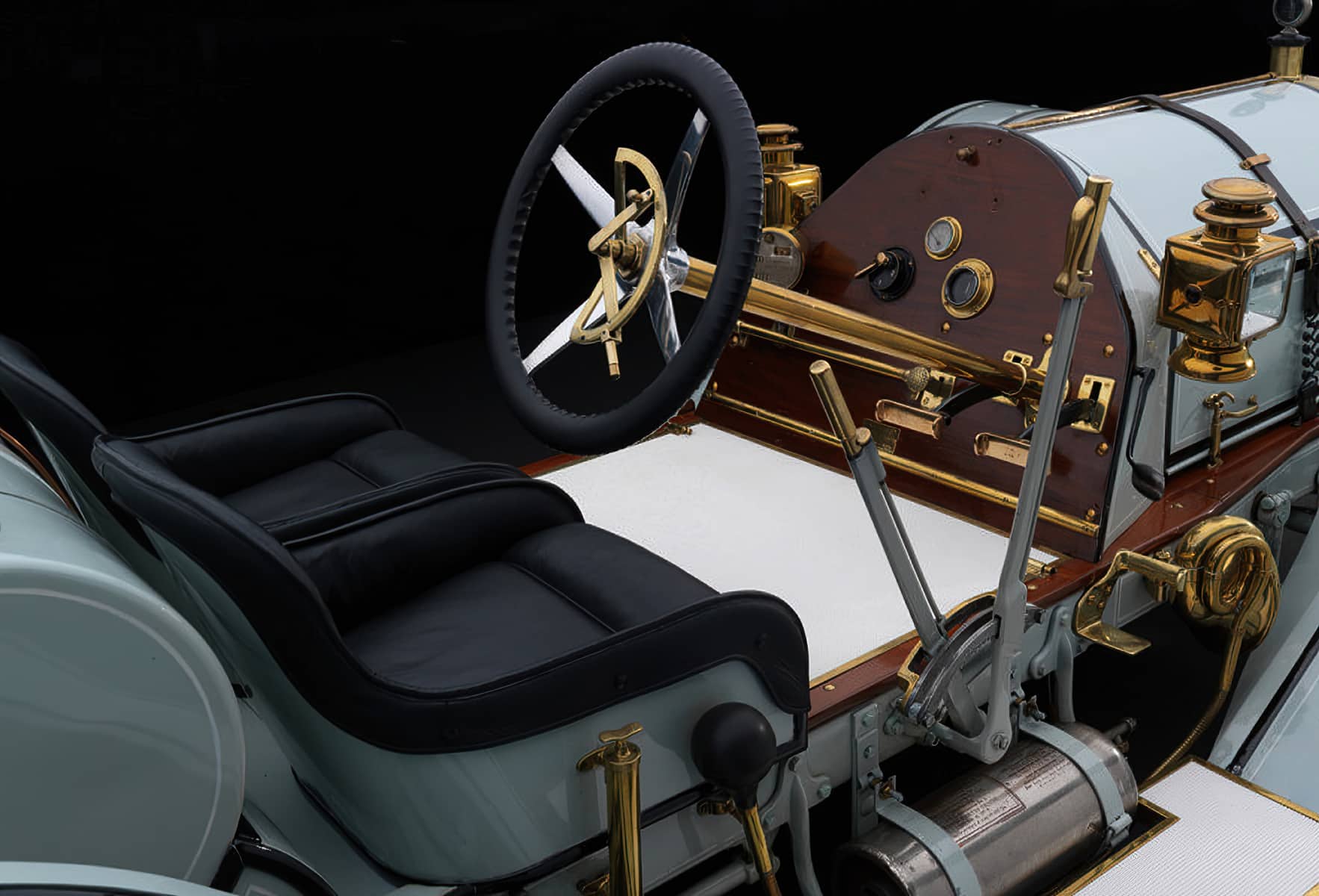
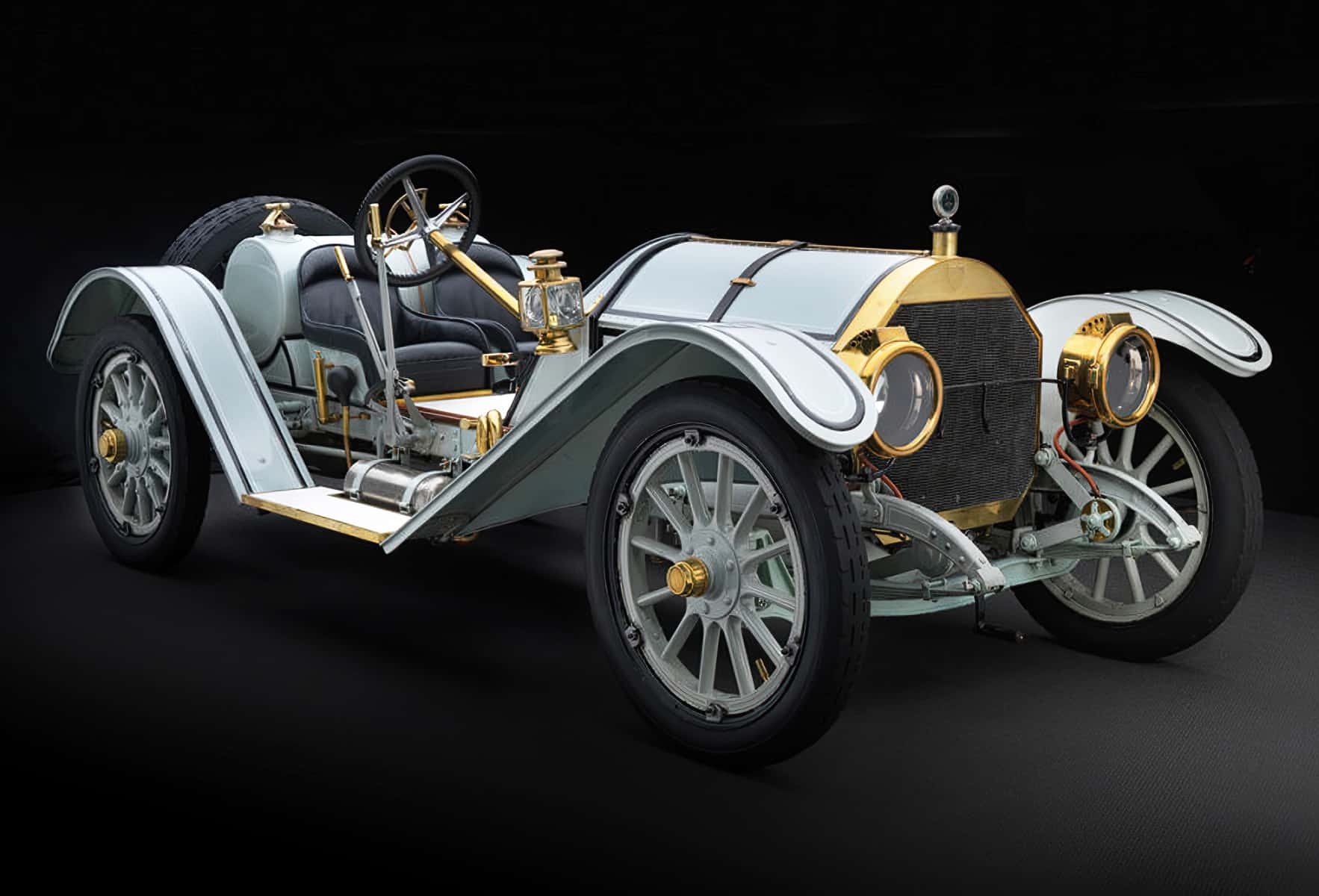
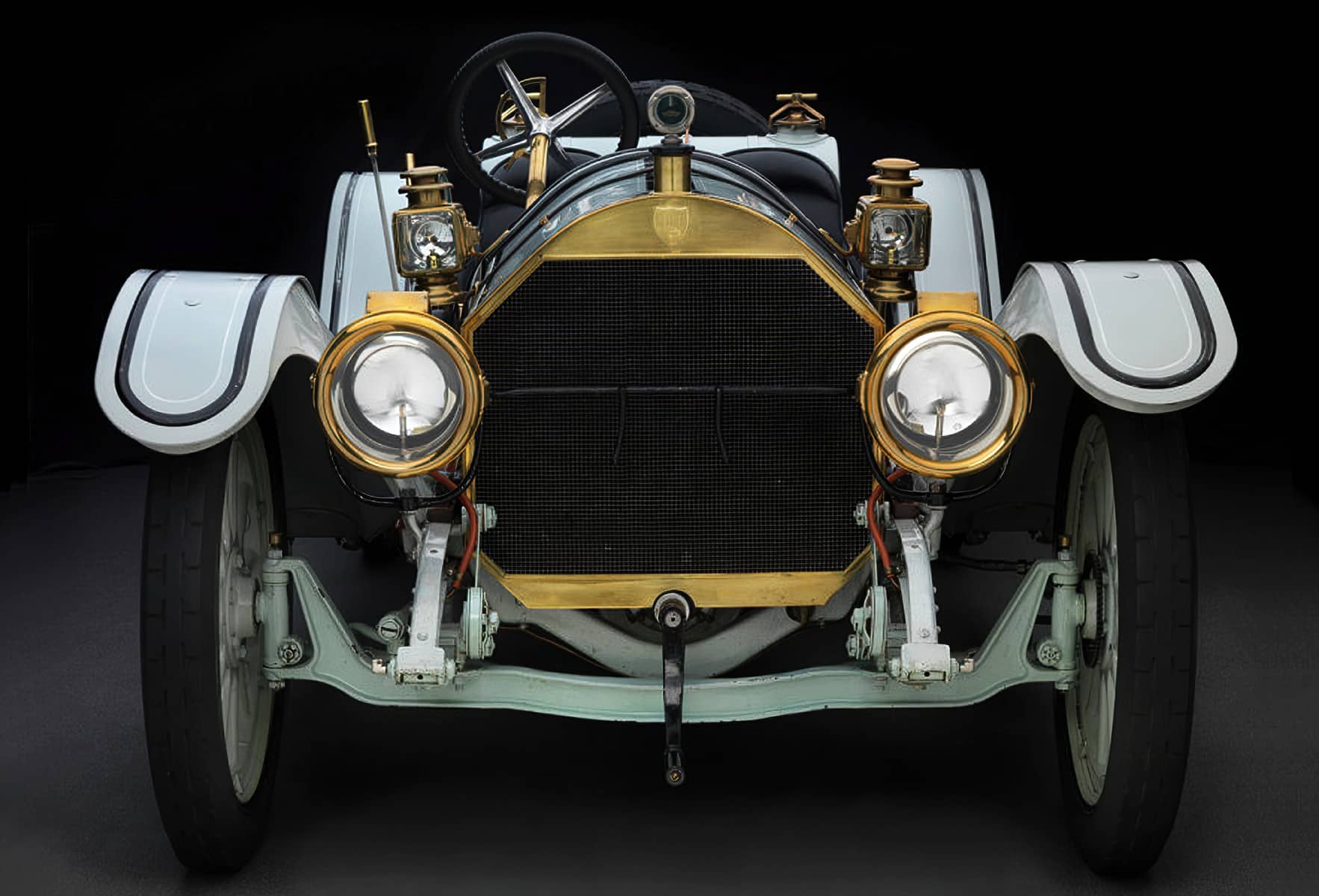
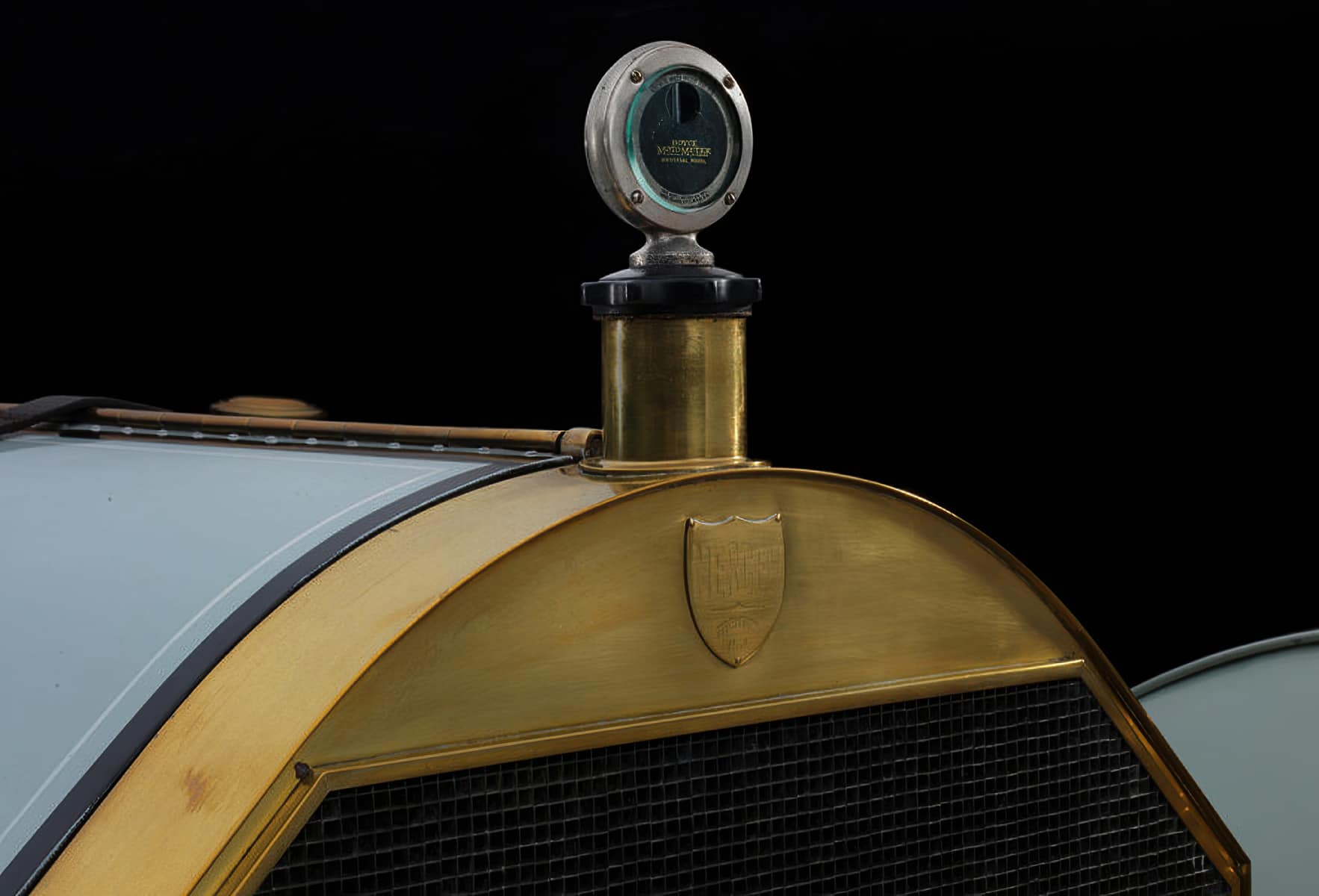
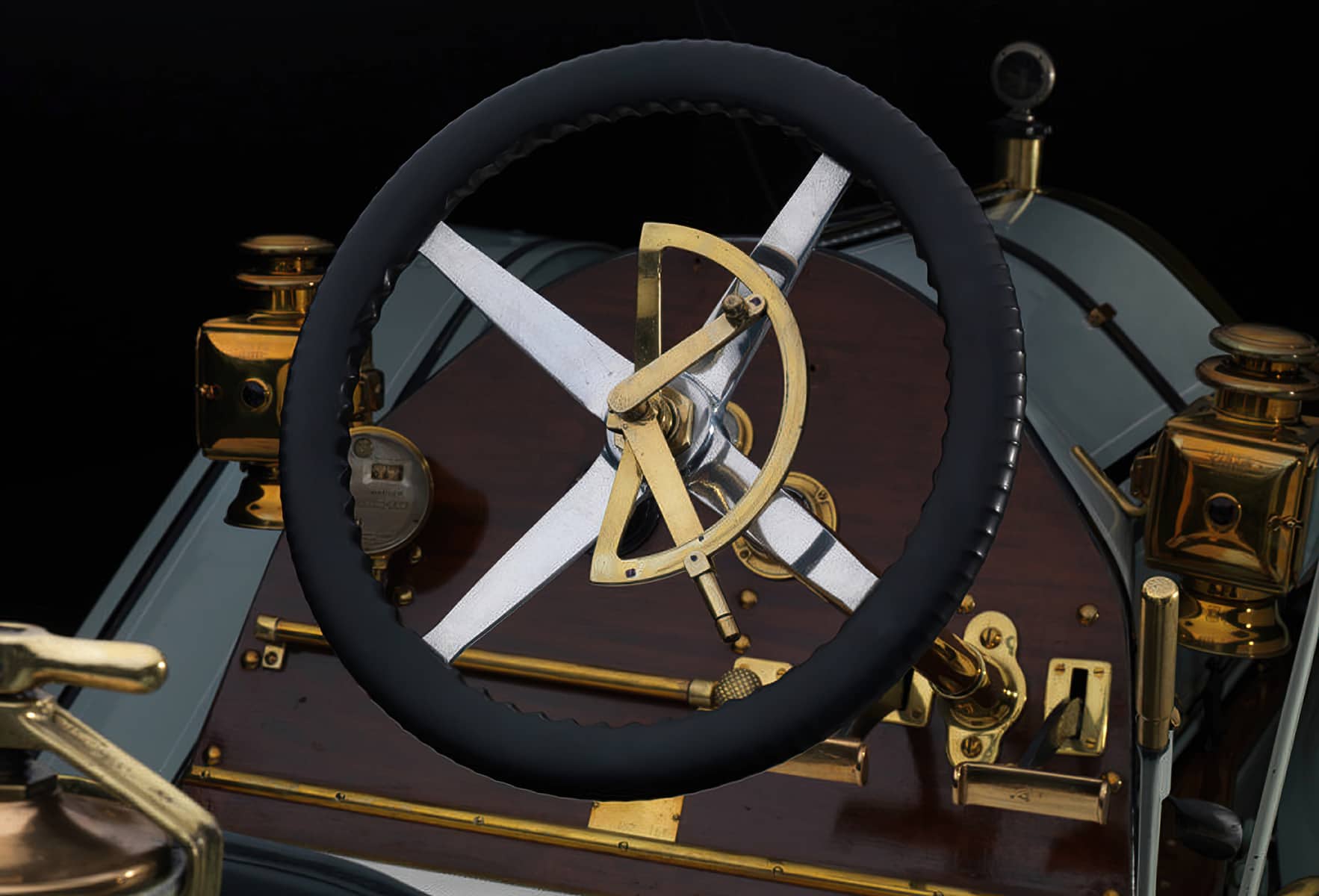


![alfa gtz perfectly imperfect webannerl[1]](https://automedia.revsinstitute.org/wp-content/uploads/2024/08/Alfa-GTZ-Perfectly-Imperfect-webannerl1-uai-1200x800.jpg)
